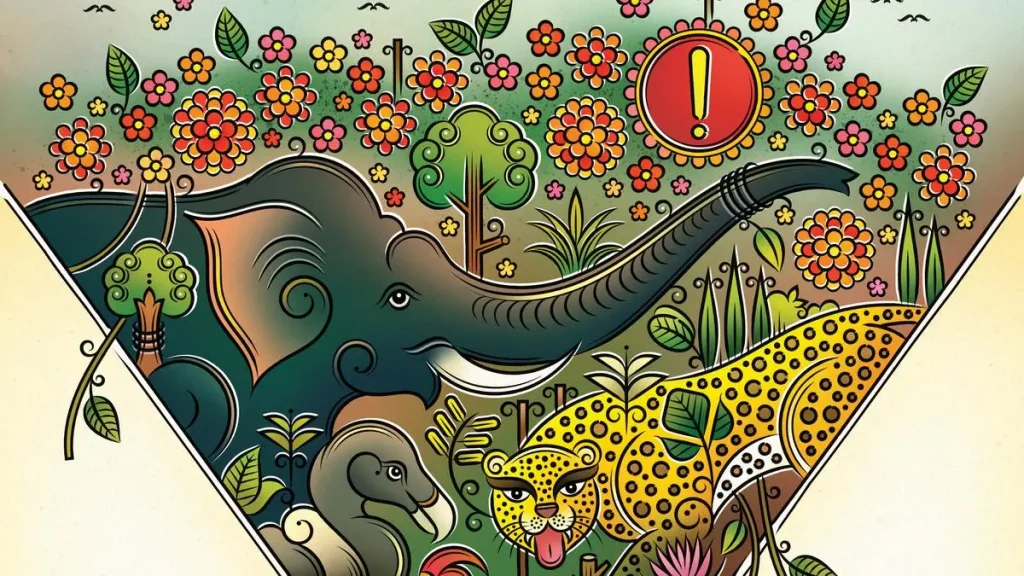
When governments believe that wealth is an all-access pass that need not be supervised and “development” a mantra that need not be interrogated, private players quickly commandeer the regulatory and legislative systems meant to protect common resources.
It’s a perturbing paradox. On the one hand, as our Cover Story tracks, India is seeing a precipitous loss of wild species, triggered in significant part because its forests and grasslands are being devoured by large corporations and mining conglomerates. On the other hand, in Jamnagar in Gujarat, the scion of one of India’s richest corporations has set up Vantara, a unique, ultra-luxurious facility for wild animals, which dominated social media last month after Prime Minister Narendra Modi formally inaugurated it.
India is losing not just forest cover but other wildlife habitats such as shrub land and water bodies at an alarming rate. Meanwhile, in arid Jamnagar, Vantara is spread across 3,000 acres of forest cover and sprawling enclosures, making it the largest wildlife facility of its kind in the world.
India ranked 176 of 180 nations in the 2024 Global Nature Conservation Index (NCI) and is losing wild species of every kind: from the great Indian bustard to the gharial to the hangul. Vantara, meanwhile, has become home to not just elephants, lions, and rhinos from India but also orangutans from Borneo, anteaters from Venezuela, okapi from Congo, and much more. Equally astonishing are the numbers: Research into animal import data by the German magazine Süddeutsche Zeitung and the Venezuelan investigative website Armando Info estimates that a jaw-dropping 39,000 wild animals were delivered to Vantara until December 2024. For comparison, the Berlin Zoo, the world’s largest in size and number of animals, has around 2,500 creatures. Vantara’s own website puts its animal population at a far more modest 2,000.
To be clear, there is no connection between Vantara’s cornucopia of wildlife and India’s depleted jungles. The stark contrast is merely a symptom of a larger malaise: the predilection for the private over the commons. Over the preceding decades, as successive governments have handed over more and more of the country’s common wealth—pastures, riverbeds, beaches, seawaters, trees—to profit-driven private entities, the spaces as well as the birds and animals, fish and flowers, sand and stones they nourish, which belong to the people and to future generations, have been reduced to tradeable commodities. From a forest logged and foraged by small communities to one ravaged by corporations with no stake in it save short-term profiteering has been but a short, crushing step.
The government’s withdrawal from its responsibility of protecting habitats and wildlife results in private control that is interested only in extraction. Across forests and mountains, raptorial corporations are bullying or tricking the original inhabitants into signing away their communally held land rights. Private extraction kills the future productivity of the commons. Instead of wealth “trickling down”, self-sufficient economies and communities at the bottom are destroyed along with the habitats they intuitively protected. When governments believe that wealth is an all-access pass that need not be supervised and “development” a mantra that need not be interrogated, private players quickly commandeer the regulatory and legislative systems meant to protect common resources.
If we are to reverse the damage being wrought, we need intense groundwork and collaborative community efforts, such as the successful campaign launched in 2003 to save the hornbill, where the Arunachal Pradesh Forest Department worked closely with the Nyishi tribe. But that would mean acknowledging the problem, and the government has already dismissed the losses listed by the NCI as “unrealistic” data.
Instead, the Prime Minister and his administration are hailing a private venture of gigantic proportions. At least two deeply researched news reports have shared worries about the venture’s animal sourcing, its potential to spur the wildlife trade, and the issues of monopoly and ethics inherent in any vaunting ambition of Jurassic Park-ish proportions, but such concerns fade away in the dazzle of glossy close-ups with lions and Instagram paeans to “ecological sustainability”.








